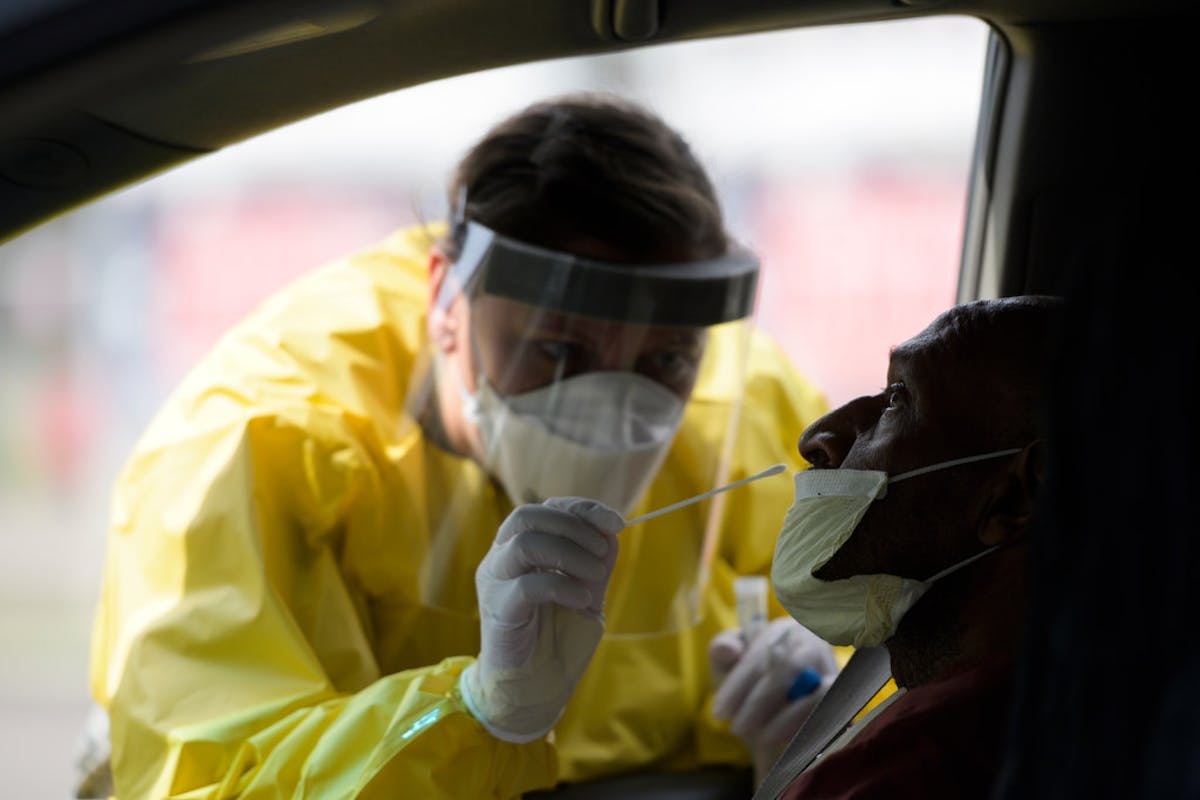COVID-19 cases in Minnesota continued to grow at a steady rate Saturday as health officials renewed their concern that young adults are driving the spread.
Roughly one-quarter of new cases reported Saturday were in people age 15 to 24, said Kris Ehresmann, the director of infectious disease for the Minnesota Department of Health. Those infections, she said, are contributing to a sustained level of transmission across the state that could threaten already limited plans for students to return to schools this fall.
"We feel like a storm is brewing and everyone is partying on the beach," Ehresmann said.
On Friday, Minnesota reported 15 confirmed cases, including one hospitalization, linked to the Sturgis Motorcycle Rally this month in South Dakota. Health officials offered no new information Saturday about the cases, but there is reason to think the count could grow significantly, said Michael Osterholm of the University of Minnesota's Center for Infectious Disease Research and Policy.
"This is not a surprise," Osterholm said. "The question is: How much bigger is it going to get?"
The Health Department on Saturday reported that eight more people have died of COVID-19 in Minnesota, including four residents of long-term care facilities. Statewide, residents of those facilities have accounted for about three-quarters of the 1,761 who have died from the virus.
Average daily death counts in Minnesota have been slowly rising in recent weeks. For the week ending Saturday, the state reported 62 deaths — the highest weekly figure since June.
A net increase of 734 new coronavirus infections reported Saturday came on a volume of about 16,685 completed tests — relatively high counts on both measures compared with recent averages. Last week, Minnesota averaged 636 new cases per day, compared with a seven-day average of 616 cases the previous week.
Students: Lay low
For more than a week, state health officials have stressed the need for college students to "lay low" so they don't bring COVID-19 to campus this fall. On Friday, officials started sending the message to K-12 students in Minnesota, as well.
Improved case rates in two counties last week meant that recommendations would support more K-12 schools trying a hybrid of distance and in-person learning this fall. That was a good sign, Ehresmann said, but she expressed concern that the improved numbers won't hold.
"We are seeing a huge proportion of our cases in these younger age groups," she said. "I'm really concerned that they're not taking it seriously."
Ehresmann added: "I'm concerned that people somehow think that this new normal of these high case numbers is OK."
South Dakota officials have said that fewer than 25 cases have been connected to the Sturgis Motorcycle Rally, which drew an estimated 460,000 vehicles to the southwest corner of the state Aug. 7-16.
Cases reported thus far likely stem from transmissions that occurred early in the event, Osterholm said, since it takes five to seven days for symptoms to appear and another three to five days for many to seek tests.
Considering how long it can take for tests to get processed, he said, and for public health officials to interview those who test positive, cases connected to Sturgis could take two to four weeks to fully show up.
"This is just so early," Osterholm said.
COVID-19 is a viral respiratory illness caused by a new coronavirus that was found circulating late last year. Since the first case was reported in Minnesota in early March, 6,113 people have required hospitalization.
People at greatest risk include those 65 and older, residents of long-term care facilities and those with underlying medical conditions — including lung disease and serious heart conditions, obesity and diabetes. Many who are infected don't show symptoms, and most who take ill have mild to moderate cases.
Still, while most with COVID-19 don't need to be hospitalized, research last week from the University of Minnesota drove home the importance of watching hospital numbers.
Looking across 23 states, researchers found that a 1 percentage point increase in ICU bed use, or about 17 beds on average, was associated with an increase of nearly three deaths from COVID-19 over the following seven days.
"If it is more crowded, you would expect higher death rates," said Soumya Sen, an associate professor and academic director of the Management Information Systems Research Center at the U's Carlson School of Management. "What this does is, it puts a number to it."
On Saturday, the Health Department reported 316 patients hospitalized with COVID-19 including 148 patients in intensive care. The numbers were up significantly from Friday's numbers, but roughly equal to counts released on Thursday.
That fits with a recent trend for daily tallies for hospitalized patients in Minnesota to hold steady. The counts on Saturday were well below peaks in late May of more than 600 hospitalized patients and about 260 in the ICU.
Minnesota has now reported 68,867 confirmed COVID-19 cases. Of those, 61,698 patients no longer need to be isolated.
Numbers published Saturday morning cover the 24-hour period ending at 4 p.m. Friday.
Christopher Snowbeck • 612-673-7744

Minnesota lawmakers aim to protect rideshare drivers hurt on the job — but pay remains unresolved

Buy Nothing meets GoFundMe: How a new Eden Prairie website aims to 'revolutionize' philanthropy

St. Paul proposal would allow cannabis businesses throughout commercial corridors
13-year sentence for unlicensed driver who fatally hit motorist while fleeing police in Oakdale

